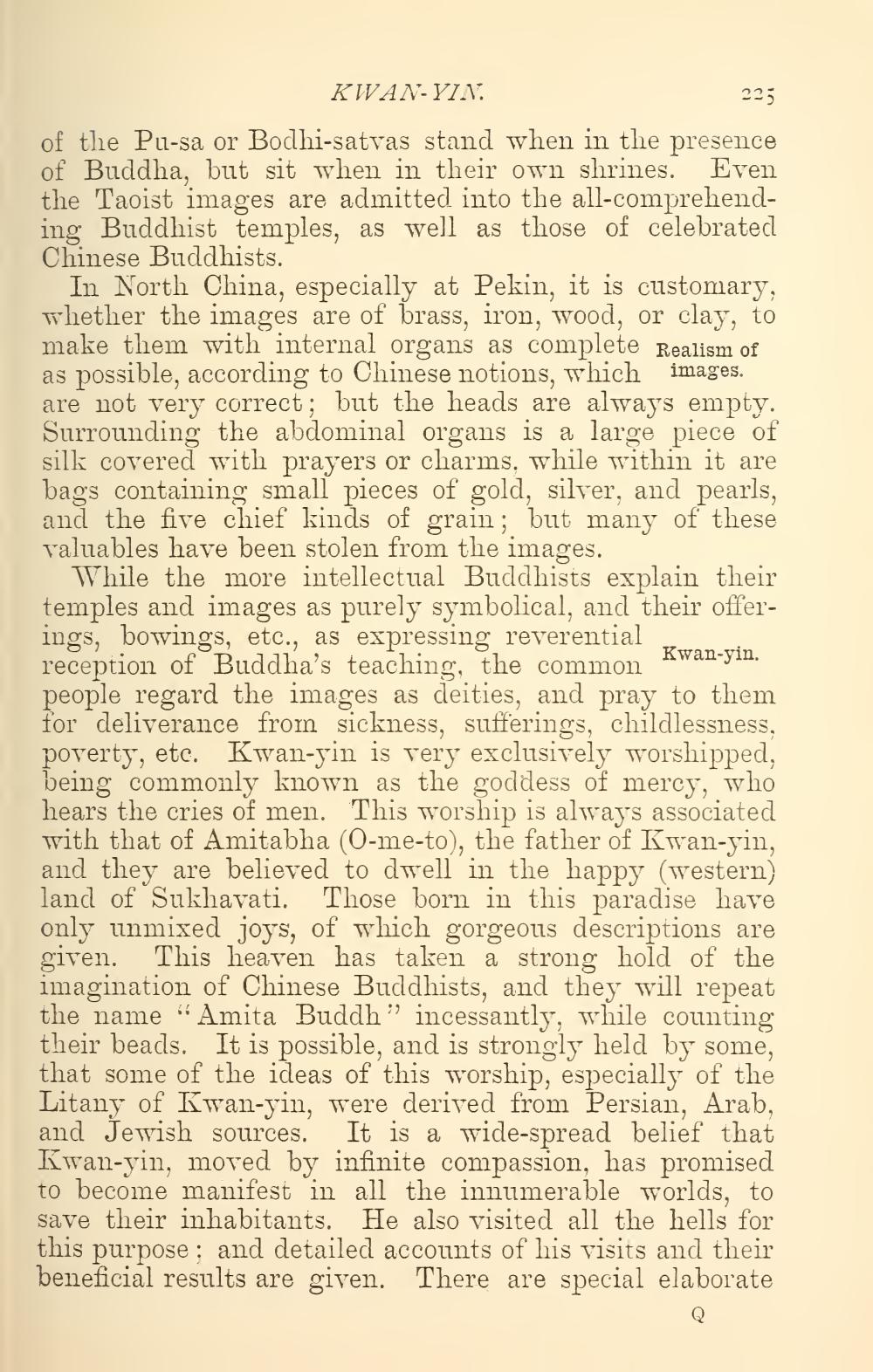________________
KWAN-YIN:
225 of the Pu-sa or Bodhi-satvas stand when in the presence of Buddha, but sit when in their own shrines. Even the Taoist images are admitted into the all-comprehending Buddhist temples, as well as those of celebrated Chinese Buddhists.
In North China, especially at Pekin, it is customary, whether the images are of brass, iron, wood, or clay, to make them with internal organs as complete Realism of as possible, according to Chinese notions, which images. are not very correct; but the heads are always empty. Surrounding the abdominal organs is a large piece of silk covered with prayers or charms, while within it are bags containing small pieces of gold, silver, and pearls, and the five chief kinds of grain; but many of these valuables have been stolen from the images.
While the more intellectual Buddhists explain their temples and images as purely symbolical, and their offerings, bowings, etc., as expressing reverential
Kwan-yin. reception of Buddha's teaching, the common swana people regard the images as deities, and pray to them for deliverance from sickness, sufferings, childlessness, poverty, etc. Kwan-yin is very exclusively worshipped, being commonly known as the goddess of mercy, who hears the cries of men. This worship is always associated with that of Amitabha (0-me-to), the father of Kwan-yin, and they are believed to dwell in the happy (western) land of Sukhavati. Those born in this paradise have only unmixed joys, of which gorgeous descriptions are given. This heaven has taken a strong hold of the imagination of Chinese Buddhists, and they will repeat the name "Amita Buddh” incessantly, while counting their beads. It is possible, and is strongly held by some, that some of the ideas of this worship, especially of the Litany of Kwan-yin, were derived from Persian, Arab, and Jewish sources. It is a wide-spread belief that Kwan-yin, moved by infinite compassion, has promised to become manifest in all the innumerable worlds, to save their inhabitants. He also visited all the hells for this purpose : and detailed accounts of his visits and their beneficial results are given. There are special elaborate




